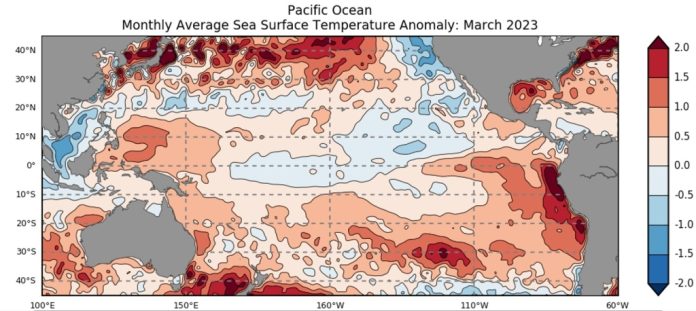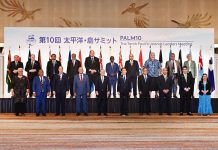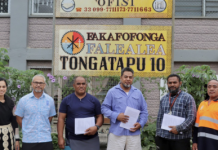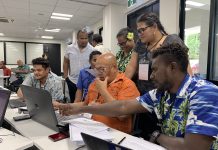The current state of the El Niño-Southern Oscillation (ENSO) was one of the items on the agenda for discussion during the 187th session of the Online Climate and Ocean Forum (OCOF) which was convened in Vanuatu.
The Bureau of Meteorology confirmed that while they have issued an El Niño Watch, the current ENSO state is still Neutral, meaning it is neither a La Niña or an El Niño. However, the Bureau are observing indicators that point towards the possible development of an El Niño event, with a 50 percent chance of occurring towards middle of 2023.
The ENSO is one of the major climate drivers in the Pacific which influences the normal rainfall, temperatures, and sea level patterns across the region. El Niño is characterised by reduced easterly trade winds and warmer sea surface temperatures around the equatorial Pacific. It will result in below normal rainfall for countries in the Western Pacific, while countries in the Central Pacific region will experience higher than normal rainfall.
The Pacific is just coming out of a triple-dip La Niña event, whereby La Niña was declared in 2020, 2021 and 2022. When asked whether it is an abnormal occurrence, coming out of a triple-dip La Niña straight into an El Niño event should it develop, Grant Beard of the Australian Bureau of Meteorology said it is not necessarily so.
“With climate change, we will see the effects of events such as El Niño amplified across the region. The areas that would normally be dry during El Niño will get even drier and will be more susceptible to droughts,” Beard said.
The Bureau will keep a watchful eye on the situation and its developments, and will keep the Pacific Meteorological Services informed during the monthly OCOFs, as well as the Pacific Islands Climate Outlook Forums which will take place in April and October this year.
The OCOF serves as a platform for National Meteorological Services in the Pacific to conduct seasonal forecasts using different forecasting platforms. This functionality used to be done mostly by agencies outside of the Pacific, such as the National Institute of Water and Atmospheric Research in New Zealand, the Australian Bureau of Meteorology, and the National Oceanic and Atmospheric Administration in the United States Of America.
OCOF is hosted by the Secretariat of the Pacific Regional Environment Programme (SPREP) through its Pacific Meteorological Desk Partnership in the third week of every month. It is attended by 12 Pacific island countries and supported by BOM and the Pacific Community (SPC).
The online forum typically includes an update on ENSO and the Madden-Julian Oscillation which is another climate driver in the Pacific, ocean data such as sea surface temperatures, sea levels and coral bleaching, rainfall and cyclone outlook, and the presentation of country reports as well as any general discussions and comments.
“The OCOF provides a great opportunity for Pacific Met officers to come together and share their observations within their countries as well as their forecast for the next three months,” says Philip Malsale, SPREP’s COSPPac Climatology Officer.
“It is also a good chance for them to engage with our colleagues from BOM and SPC to get clarifications on any issues pertaining to the current state of our climate, and to ask any questions about the forecasting tools and models that they use on a daily basis to carry out their work.”
OCOF 187 was attended by Fiji, Kiribati, Federated States of Micronesia, Palau, Papua New Guinea, Niue, Republic of Marshall Islands, Samoa, Solomon Islands and Vanuatu as the Chair.
For more information, please contact Philip Malsale at philipm@sprep.org
SOURCE: SPREP/PACNEWS


















